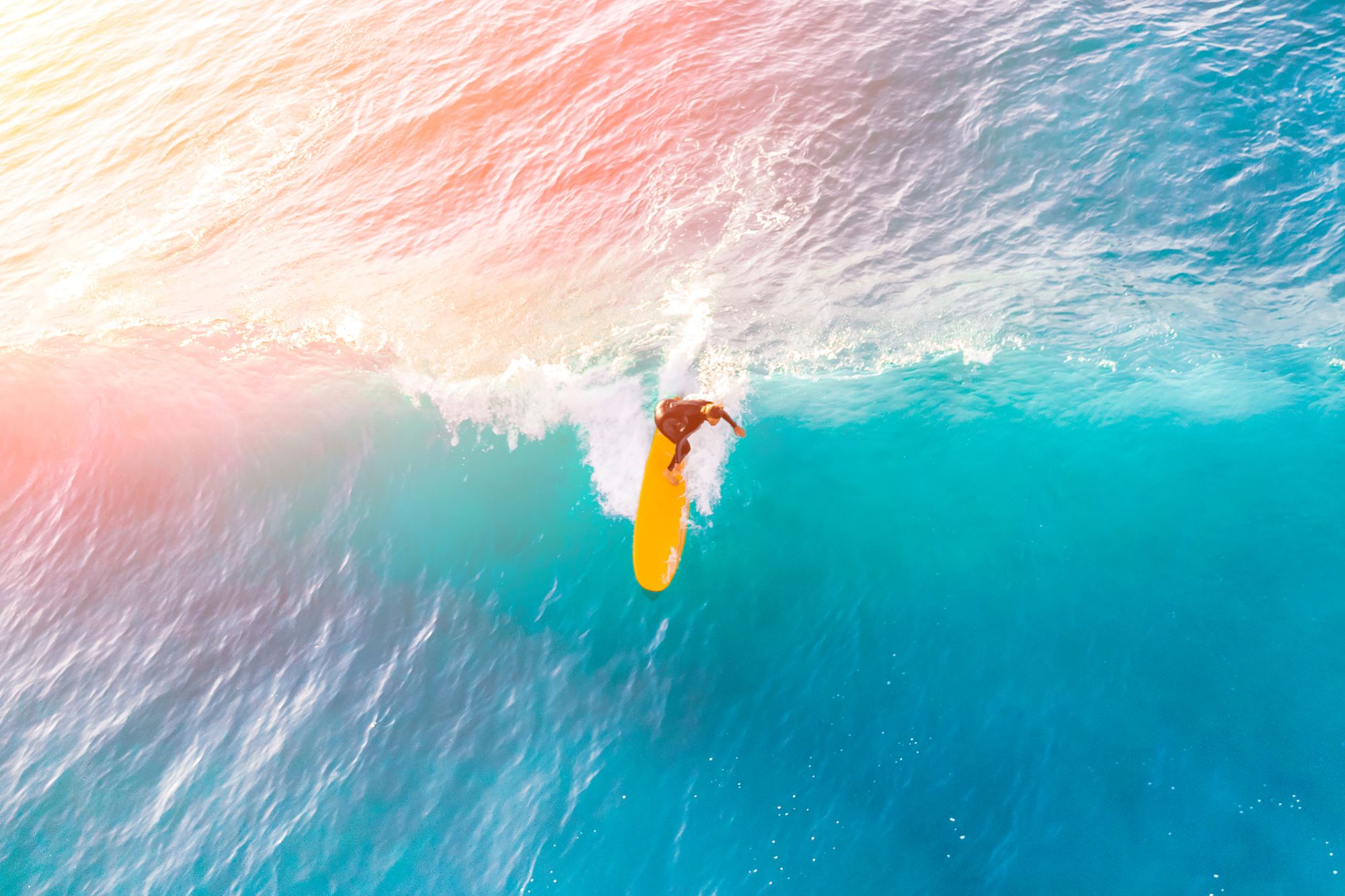Urge Surfing: A Mindful Technique to Navigate Through Cravings



As a Clinical Research Specialist, writer, and person with lived experience in mental health recovery, Grace blends clinical research with honest storytelling to inspire healing and hope. In her free time, she enjoys writing books for young adults, an age when she needed stories the most.

Dr. Mala, is the Chief Clinical Officer at Recovery.com, where she develops impartial and informative resources for people seeking addiction and mental health treatment.




As a Clinical Research Specialist, writer, and person with lived experience in mental health recovery, Grace blends clinical research with honest storytelling to inspire healing and hope. In her free time, she enjoys writing books for young adults, an age when she needed stories the most.

Dr. Mala, is the Chief Clinical Officer at Recovery.com, where she develops impartial and informative resources for people seeking addiction and mental health treatment.
- Urge surfing is a mindfulness technique to manage cravings.
- It sees urges as a wave with a trigger, peak, and end.
- Learning to ride the wave boosts resilience in recovery.
Have you ever given in to a craving for sugar or salt? Coffee? A movie you’ve seen a dozen times, ignoring all the others on your roster?
These passing, innocent cravings happen to all of us. Indulging doesn’t usually cost your sobriety, relationships, or financial wellness. But the urge to take drugs, drink alcohol, or gamble can. Urges can arise at any point in your recovery journey and can derail even the straightest course. That’s where urge surfing comes in.
Urge surfing, a specialized mindfulness technique, can help you “ride the wave” of an urge and experience them less and less. Urges typically last 30 minutes at most when they’re handled mindfully and calmly through urge surfing.
You can use urge surfing for more than addiction recovery, too. Use it to navigate any kind of urge, anytime, anywhere.
Introduction to Urge Surfing
Psychologist Alan Marlatt developed the mindfulness-based urge surfing technique1 as a quick and effective way for people to navigate cravings. Urge surfing is based on the mindfulness principle that urges, like waves, rise, peak, and eventually crash and dissipate. It sees addiction cravings as “rideable” and bearable with the right tools and practices.
Compared to other interventions, like mindfulness-based cognitive behavioral therapy, urge surfing has a much faster impact. You may immediately notice benefits instead of the expected 2-4 weeks with traditional therapy and other interventions. You can also practice urge surfing almost anywhere, whereas traditional therapy often occurs in a specific setting (like an office you have to travel to). And, you can urge surf without the guidance of a professional, making it even more accessible.
With its ease and effectiveness, urge surfing has been used as a tool for addiction recovery1 and craving management. It teaches you to mindfully notice, sit with, and “ride” urges without self-judgment or fear.
Understanding Cravings and Impulses
Cravings are strong desires for something, like dessert after a meal or a cup of coffee on a groggy morning. People in recovery and active addiction often experience cravings for substances. Cravings can occur as your body adjusts to not having a substance, like alcohol. Certain places, situations, and emotions can also trigger cravings2, since your brain relates substance use to relieving stress and other unpleasant emotions. Even someone in long-term recovery can experience intense cravings.
Impulses are sudden desires to do something. For example, you may see a soft blanket and feel a strong impulse to run your hand over it. You might reach out to touch it without even thinking about it. But, some impulses you first feel, notice, and then decide to act on it or not, like an impulse to touch a hot stove. While impulses are typically brief and fleeting, they can feel intense and usually lead to immediate action. This distinguishes them from cravings, which are persistent desires for something specific.
An urge can feel more dire and discombobulating than a craving or an impulse. Negative emotions, like sadness and anxiety, can increase urges3 and make them harder to resist. But urge surfing can mitigate the urge and soothe the emotions flowing with it.
The Principles of Urge Surfing
The grounding principle of urge surfing is that you can navigate and alleviate urges without giving in. It hinges on mindfulness and experiencing emotions without self-judgment, fear, or worry. You may not experience a change in your urges, but rather in how you respond to them4. By staying present and focusing on the sensations in your body, you can ride out the urge without giving in to it.
The “wave” you ride has 4 core parts: a trigger, rise, peak, and fall. As you continuously surf these waves, you’ll get better and better at understanding and alleviating urges.

Step-by-Step Guide to Urge Surfing
The process of urge surfing5, like cravings and urges themselves, varies from person to person. One person may quickly ride the wave of an urge, while someone else may need a half hour of peaceful solitude to reach the end of the wave. So–listen to your body and what works for you without expectations or judgment. If you don’t feel it helps right away, stick with it. Try it again and keep yourself open to the possibility of success.
Acknowledgment
Urge surfing starts by noticing and acknowledging what you’re feeling. This may look like:
“I want a drink right now. I feel my mouth watering and want the sensation of it in my stomach. I’m irritated and distracted because it’s hard to think of anything else.”
You can also notice your environment, mood, and other factors that may have triggered the urge. Did you see or feel something that triggered it? Make note of it if you can.
Acceptance
Next, you accept the urge, rather than resist or condemn it. It’s happening, but you can choose how you respond to it. Now, if you want, you can also adjust your environment. Maybe sit in a private room, cross-legged with your eyes shut. Keep in mind you can urge surf anywhere, but have the option to pick your environment.
Stay Present, Curious, and Patient
Stay on the wave—notice and accept however intense the urge feels with curiosity and patience. Don’t force yourself to do anything about it, just experience it. Even if it feels bad or uncomfortable, you’re still in control. Picture a wave in your head, and that you’re on top of the crest as it moves towards the shore.
Use your breathing as a grounding tool. Imagine it as the pulse of the water beneath you, moving within the wave.
Reorient as You’re Ready
Check in on how intense the urge feels. Does it feel distant now? Do you feel more in control? If you do, you’re ready to come to shore. Reorient to your surroundings (what you can hear, feel, smell, and taste) and open your eyes if you shut them.
Reflect on the experience and what you may have learned from it. Write it down or record a voice note. Keeping track like this can help you realize progress, learn what triggers your urges, and know yourself better.
Applications of Urge Surfing
You can use urge surfing for all sorts of cravings and urges, related to addiction or not. Less intense urges, like an urge to check social media or have a certain food, can pass quickly with urge surfing. The intense urges to use substances can take longer to “ride”, but it’s just as doable.
You can also use urge surfing as a tool for emotional regulation, which works almost the same way. Instead of riding an urge, you move through an intense emotion like anger or panic. You’ll notice the emotion and accept it without judgment, then let it pass without acting on it.
Because you can urge surf almost anytime, anywhere, it’s a practical tool for the cravings, urges, impulses, and intense emotions encountered in daily life. You could surf the urge to respond angrily in a work email, or use urge surfing to cut down on or quit smoking.
Challenges and Support
Those who dislike or struggle with meditation may find urge surfing tedious. Practice and repetition can help, especially if you make your environment as comfortable as possible. Try playing instrumental music or binaural beats to help you focus.
The intensity and discomfort of urges can also pose a challenge, as urge surfing requires you to feel but not toact on the urge. Sitting with that discomfort can feel difficult at first. But as you keep doing it, you’ll get more used to the process and confident in your ability to “surf” safely to shore.
Build Hope as You Hang 10
Urge surfing serves as a powerful sobriety tool and resource for hope. Use it to manage urges to take substances, impulses, and reactive behaviors any time in your life. You can see just how capable you are of managing urges and navigating challenging moments.
As you become more adept at urge surfing, you’ll discover a growing confidence in your capacity to manage difficult situations and make empowered choices in your recovery. This skill doesn’t just apply to sobriety; it’s a life skill that enhances your overall self-efficacy and agency. Each successful experience of riding out an urge reinforces a hopeful outlook, showing you can overcome challenges and continue on your path to recovery and well-being.
-
Urge Surfing in the New Year: Resolving to Ride the Waves of Change – UCI Susan Samueli Integrative Health Institute – SSIHI. https://ssihi.uci.edu/news-and-media/blog/urge-surfing-in-the-new-year-resolving-to-ride-the-waves-of-change/. Accessed 22 May 2024.
-
Anton, Raymond F. “What Is Craving?” Alcohol Research & Health, vol. 23, no. 3, 1999, pp. 165–73. PubMed Central, https://www.ncbi.nlm.nih.gov/pmc/articles/PMC6760371/.
-
Schubert, Kimberly N., "Evaluation of a Brief “Surf the Urge” Intervention" (2018). UNLV Theses, Dissertations, Professional Papers, and Capstones. 3382. http://dx.doi.org/10.34917/14139909
-
Bowen, Sarah, and Alan Marlatt. “Surfing the Urge: Brief Mindfulness-Based Intervention for College Student Smokers.” Psychology of Addictive Behaviors: Journal of the Society of Psychologists in Addictive Behaviors, vol. 23, no. 4, Dec. 2009, pp. 666–71. PubMed, https://doi.org/10.1037/a0017127.
-
“Key Concepts of the Technique.” Urge Surfing, https://urgesurfing.com/key-concepts/. Accessed 22 May 2024.
Our Promise
How Is Recovery.com Different?
We believe everyone deserves access to accurate, unbiased information about mental health and recovery. That’s why we have a comprehensive set of treatment providers and don't charge for inclusion. Any center that meets our criteria can list for free. We do not and have never accepted fees for referring someone to a particular center. Providers who advertise with us must be verified by our Research Team and we clearly mark their status as advertisers.
Our goal is to help you choose the best path for your recovery. That begins with information you can trust.









